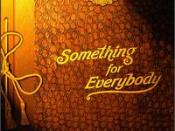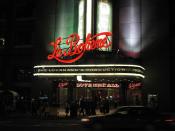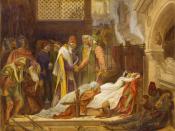Luhrmann and Zeffirelli use very opposite effects and techniques in each of the Romeo + Juliet films. The contrasts between the Zeffirelli 1968 and the Luhrmann 1997 versions are vast.
Even though the directors of each film use different effects and techniques. They both tell the story in their own unique way. Zeffirelli's traditional, English, authentic piece of almost theatre with basic use of lighting, camera and sound.
Luhrmann's modern, loud, and emotionally gripping piece of film uses a special variety of lighting, camera and sound to emphasise the piece to the max. Luhrmann's is certainly far more powerful than Zeffirelli's in all aspects. Its use of music creates tension, joy, sadness which really adds a great deal of emotion compared to Zeffirelli's. The camera and lighting creates another world and I certainly prefer Luhrmann's to Zeffirelli's.
The opening scenes of each both include the famous dialogue: "Two families, both alike in dignity.
In Fair Verona where we lay our scene..." Luhrmann's repeats the dialogue twice first using a TV news reporter and then using a modern and powerful approach using text to emphasise the meaning of the dialogue fully. The view of Verona and the "Montague" and "Capulet" skyscrapers, determine the rivalry is down to Business empires of the two families. On the other hand, in Zeffirelli's version it uses just the slow, patient narration and has some traditional middle-age music with the long shot camera shot of Verona. There shows no evidence to determine their bitter, prehistoric feuds.
The main opening scene is where the Capulet family members and the Montague family members meet in public...
Even though the same in context, they differ immensely. The first most recognisable items are the opposite costume between the Capulet's and the Monatugue's.
In Zeffirelli's 1968 version the Capulet's wear bright...


